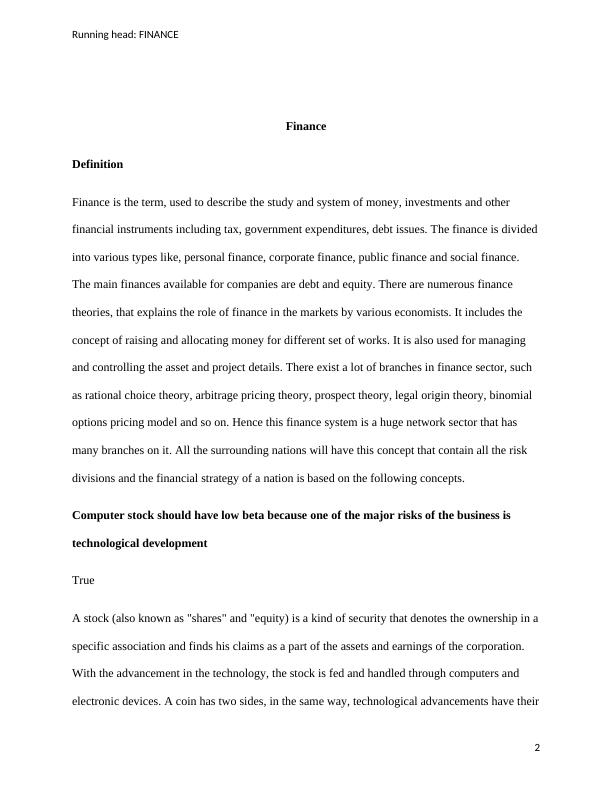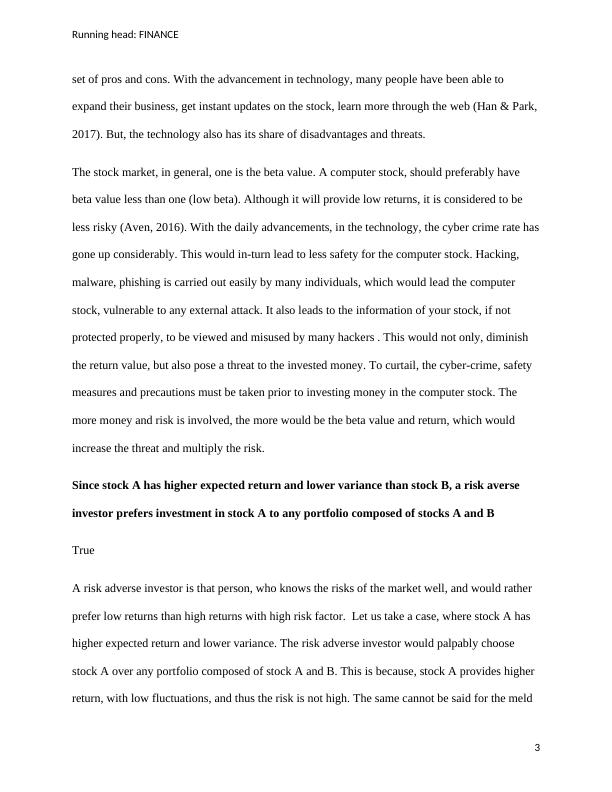Finance - Definition, Types, Theories and Implications of CAPM
Answering true or false questions and providing explanations for each statement.
8 Pages1778 Words199 Views
Added on 2023-05-28
About This Document
This article discusses the definition, types, and theories of finance, including personal, corporate, public, and social finance. It also explains the implications of the Capital Asset Pricing Model (CAPM) and the concept of beta value, negative beta, and security market line. The article concludes by stating that no model can give the exact value, but extreme variation in the expected value and outcome has made CAPM unreliable and difficult to work with.
Finance - Definition, Types, Theories and Implications of CAPM
Answering true or false questions and providing explanations for each statement.
Added on 2023-05-28
ShareRelated Documents
End of preview
Want to access all the pages? Upload your documents or become a member.
Stock Market Asset Question 2022
|6
|1156
|14
Capital Asset Pricing Model: Recent Developments and Criticisms
|10
|2873
|59
Risk Return Consideration in Finance
|7
|1860
|83
Weighted Average Capital Cost Assignment PDF
|6
|1070
|64
Analyzing the Risk and Return Relationship of CSL Ltd Securities
|12
|2329
|74
Valuation of shares of JB Hi Fi Ltd
|11
|1896
|188



